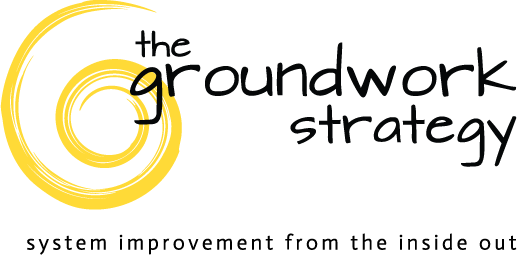In my last post, I promised to reveal some of the serious system problems we experienced during Hilda's (my mother-in-law) ovarian cancer diagnosis and treatment. Our admission experience was like a deep dive into the flow issues in the system.
There we were, Hilda and I, awaiting admission in the ER after her diagnosis. The wait was 44 hours. One might think this was an unusually busy time or strange week; but we had to come in again, 2 weeks later, after complications from chemo sent us back in an ambulance. The second time, the wait was 48 hours. I'm not exaggerating.
And it wasn't because they didn’t realize how sick Hilda was or were only thinking to admit to oncology, nope - they were pretty much trying to find a bed anywhere. Hilda eventually ended up on neurology for a few days and was then transferred to oncology.
Our experience is not unique. If you live in Saskatchewan and pay attention to the news, you might have noticed quite a lot of press about too many people being in the hospital. There are people in acute care beds waiting for placement in long term care and people in emergency waiting for acute care beds and a lot of stress and pressure in the middle.
The good part about this situation is that there has been a renewed interest in long term care itself, the need for good community services and home care, and better support for families who are able and wanting to care for family at home. And it’s high time, because, while all the smartest people say the key to transforming the healthcare system is focusing upstream, on health promotion and disease prevention – and I don't disagree – we are missing the boat unless we start focusing simultaneously downstream.
So maybe it all seems obvious – problem and solution – but I want to challenge us to consider that one of the contributing causes might actually be our improvement work. That's right, the ever-present “unintended consequence” provoked when making changes in complex systems like health care.
I applaud the scope of the provincial Lean approach, which focuses on safety, surgical care, primary care, and even those folks needing placement in long-term care - you can read more about it here. But I have some concerns.
See I think acute care is technically midstream and we are hip deep in trying to improve flow by improving efficiency of acute care processes, like surgery and emergency care. We are stuck midstream.
It's so tempting to start with acute care, what with all the people being co-located in one space, the bulk of the services clearly within the purview of health rather than social care, and the volumes. Oh the volumes! It's also the most obvious pain point - all the upstream and downstream issues seem to become visible midstream.
I have some suspicions about why it's a problem to improve the middle first. In essence, I worry about the lack of attention to two apparent paradoxes, the need to work backwards and the need for sub-optimization.
1) Work Backwards
When teaching about improvement in the past, I have always guided teams to look at pressing need or "quick wins" as indicators of where to start. However, I have a growing sense that there is "right" order to improvement, at least when focused on efficiency or increasing productivity, and that it's back to front. Ramp up surgical volumes before improving the downstream piece and you end up with a whole lot of people in acute care beds waiting to be discharged post-total joint or fracture or what have you. Maybe the system can generally handle all the folks waiting for long-term care placement. But add the folks who are in for “sooner, safer, smarter surgery” and experiencing a whole lot of efficiency improvement and you head towards unintentional disaster. While less obvious, it might be better to start downstream, open up and optimize capacity in the community and long-term care, so that when you start to increase volumes through acute care, there is somewhere for the people to go.
2) Sub-optimization
Complex systems are, as the name suggests, complex and treating them as simple will not make them so. As a result of being complex, they are very sensitive to things like unintended consequences. They are also full of paradoxes. Improving the larger system is not as straight forward as making all the parts of the system work optimally. You have to pay attention to the interactions and connections between all the parts too. Like a sports team that fails when one player optimizes at the expense of the rest of the team (think the classic ball hog), the health system needs to sub-optimize the parts to make the whole optimal. If we optimize surgical processes, it can create strain on all of the other processes leading in and out of surgery and those nearby too. Are we watching and ready for the strain?
So there you have it, my opinion (take it for what it’s worth) on one reason why there are so many people waiting.
Of course, these ideas are more like inklings on my part, not necessarily well-informed or well-formed. What do you think?
Is there a right order to process improvement (especially when focused on efficiency)? Is it better to work backwards?
Are we being attentive enough to unintended consequences of our own improvement success?
Does the principle of sub-optimization make sense and have you seen it at work before?
p.s. I am very sad to say that Hilda, my lovely mother-in-law, never made it home after her second admission. Despite the best efforts of those who cared for her, she died on August 30. You can read more about her life here.
